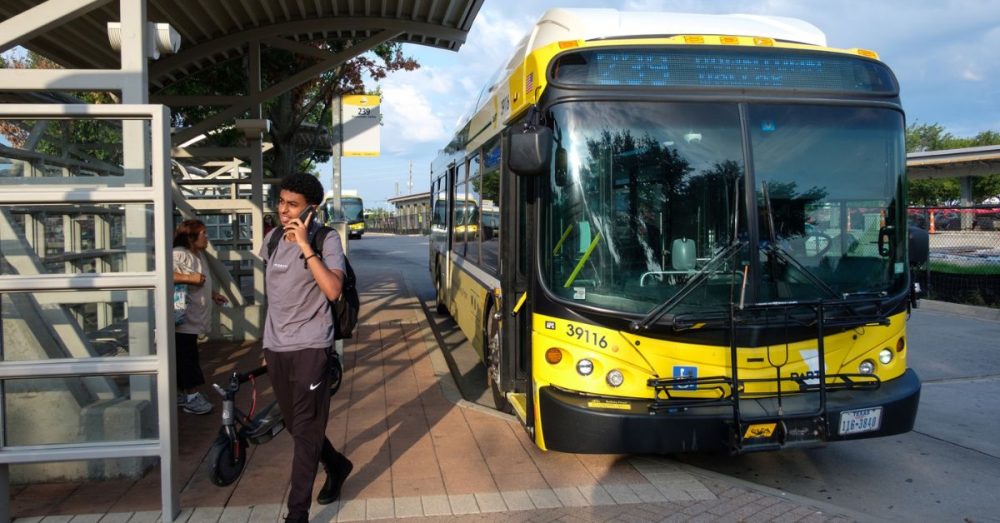Dallas Area Rapid Transit has launched a new campaign: Live Green, Ride Clean.
The campaign is focused on maintaining cleanliness at DART facilities, per the company’s September 3 press release. Areas of focus include bus stops, transfer and train stations, buses, and light rail vehicles to ensure a pleasant experience and hygienic environment for employees and riders.
“DART is thrilled to be able to spotlight the efforts of our clean team through the Live Green, Ride Clean initiative,” said Bernard Jackson, DART’s senior executive vice president and chief operations officer.
“Many people would be surprised to find out the effort and staffing that is required to maintain a system as large as ours. We take immense pride in ensuring that things look their best, that is why we have efforts like the mainline cleaning program, or a 2-hour window to remove any graffiti that is offensive,” added Gustavo Espinoza, assistant vice president of maintenance of way and facility maintenance.
Mainline cleaning requires continuous cleaning of light rail vehicles throughout the day, even during in-revenue service. Additionally, all vehicles are taken to rail and bus service yards for comprehensive cleaning before being returned to revenue service the following day.
This is a challenging undertaking. As such, DART has a workforce of over 250 individuals working on the system’s overall upkeep. Although riders may appreciate the focus on cleanliness, many have been urging DART and the City of Dallas to clean up the crime and vagrancy that is pervasive in the public transportation system.
“Pretty much every day that I’ve taken the [DART] train, I have either encountered a group of drug addicts … people who are strung out, [or] people who are sleeping on the train,” Dallasite Josh Terrell previously explained to The Dallas Express about his commute on DART from the Arapaho Center Station to the Akard Station. “You can just tell these people are either homeless or addicted to some form of drug.”
“It’s bad, it’s rough, people are crazy and they do crazy things,” college student Elizabeth Bennett shared with CBS News Texas last year about her DART commute from the Illinois Station to North Dallas. “They address you funny, people … they are disrespectful, they follow you.”
In July 2023, DART revealed plans to enhance public safety and security for DART commuters by adding over 100 contract transit security officers. However, many riders still feel unsafe.
“Regardless of my personal experiences riding DART, the impact I’ve seen on our city from DART is vagrancy, trash, [and] crime,” Farmers Branch Mayor Terry Lynne said in July.
The situation may be exacerbated by the potential loss of $6 billion in taxpayer funding for DART over the next 20 years as some cities push for funding cuts.
Proponents argue that reducing funding for DART services would allow cities to redirect taxpayer money to other priorities, such as police and fire departments.
Plano and Irving, two important sources of revenue for DART, would each see annual savings of nearly $30 million by reducing their contributions by a quarter, reported DX. Dallas officials are considering similar resolutions. However, DART CEO Nadine Lee cautioned that a 25% reduction in the sales-tax revenue from Dallas would significantly impact the agency’s operations.
Not surprisingly, DART announced in June that fares will increase starting next year, and some options will be removed, as reported by DX. This marks the first time DART will raise fare prices in six years.
Those opposed to reducing DART’s funding claim there is “significant room for improvement on public transit in Dallas. Yet, rather than do their part to fix and enhance the system, city leaders propose a 25% cut to DART’s funding,” per a Dallas Area Transit Alliance petition.
“Hate waiting for your train? Imagine the wait doubling. Frustrated by late buses? Imagine more delays. Wish for cleaner rides? Imagine them dirtier. Concerned about safety? Imagine fewer officers,” the petition continues.
Safety is a significant concern, particularly in Dallas, where the City’s attempts to get crime under control have been hampered by a persistent lack of police officers. The department has approximately 3,000 officers, even though a City assessment suggests that around 4,000 officers are needed for a jurisdiction of its size.
DPD is challenged in filling the officer shortage, partly due to a budget of just $654 million this fiscal year, much less than that of other high-crime cities like New York City, Chicago, and Los Angeles.
The officer shortage has undoubtedly played some role in the 10,339 simple assaults reported year-to-date as of September 3.
Perhaps a better campaign would be Live Safe, Ride Safe.


